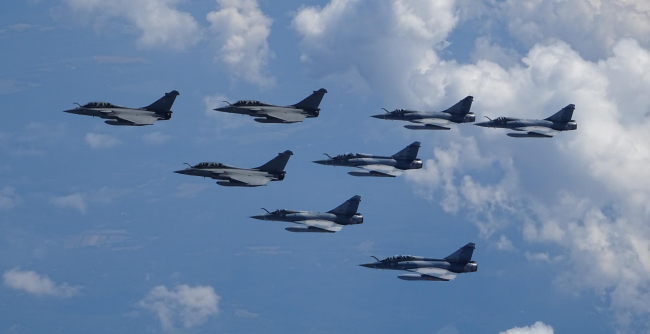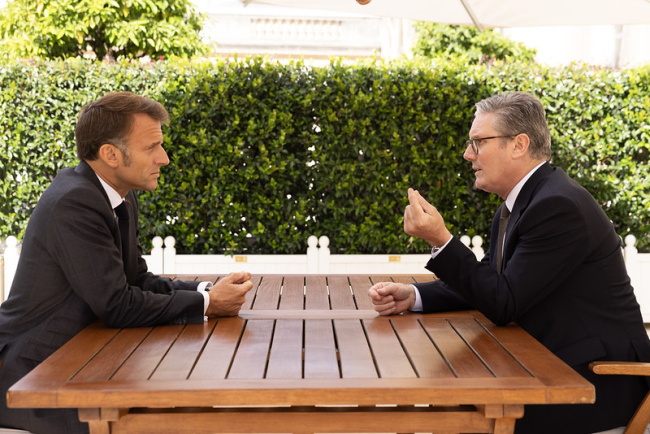Strategic Risk Reduction between Nuclear-Weapons Possessors

The topic of nuclear risk reduction has gained momentum in the international security debate among policymakers, nongovernmental organizations, and experts.

The current and expected demise of the traditional arms-control architecture, the renewed strategic competition, and the polarization of the multilateral debate on nuclear weapons have contributed to this renewed salience. Building upon the 2019 G7 Statement on Non-Proliferation and Disarmament, this report defines strategic risk reduction as the set of unilateral, bilateral, and multilateral measures that aim at lowering the likelihood of nuclear weapons use through improved communication, predictability, and restraint, and underlines the need to adopt a strategic approach to nuclear risk reduction.
Risks emanating from conflict dynamics between nuclear powers are different in nature and severity from those arising from technical incidents. This report argues that in a context of growing geopolitical rivalries, diplomats should prioritize mitigating the former type of risk. Risk reduction efforts should aim at hindering the most dangerous behaviors in crisis time, through measures focusing both on nuclear forces and on nonnuclear capabilities, whose impact on strategic balances keeps growing. Strategic risk reduction can strengthen international security and strategic stability by complementing arms control measures and deterrence policies. It is therefore crucial to ensure that diplomatic initiatives aimed at limiting nuclear risks do not ultimately, and paradoxically, increase the risk of war.
Historical experience shows not only the feasibility of such an approach, but also the concrete security benefits that can be derived from it, by channeling the behavior of nuclear powers in times of tensions, reducing the ambiguity inherent in certain strategies and behaviors, or laying the foundations for international regimes based on operational and strategic restraint as well as on transparency.

Available in:
Regions and themes
ISBN / ISSN
Share
Download the full analysis
This page contains only a summary of our work. If you would like to have access to all the information from our research on the subject, you can download the full version in PDF format.
Strategic Risk Reduction between Nuclear-Weapons Possessors
Related centers and programs
Discover our other research centers and programsFind out more
Discover all our analysesSaudi Arabia’s Nuclear Temptations. Lessons Learned from Regional Instability
Saudi Arabia’s integration in the international arena and regional stability, notably through reducing its dependence on fossil energies, are crucial elements for the success of the Kingdom’s Vision 2030, the Crown Prince’s top priority. However, Mohammed bin Salman’s declarations in 2018 and 2021, indicating that “if Iran develops a nuclear bomb, we will follow suit as soon as possible”, combined with the recent strikes on key Iranian nuclear facilities, do not bode well for the future of the Kingdom, the region and the non-proliferation regime at large.
The Future of Air Superiority. Command of the Air in High Intensity Warfare
Air superiority, understood as control of the air, is a cornerstone of the Western art of warfare. It is a decisive condition, albeit not sufficient by itself, to achieve military victory, as it enables the concentration of air power toward the achievement of wider strategic objectives and protects other components from unbearable attrition levels. It is best achieved through the offensive use of air power in a joint effort to neutralize the enemy’s air power.
Europe Uncovered?
As Russia continues to threaten Europe, the Trump administration is making no secret of its desire to withdraw—at least partially—from the defense of the Old
Continent in order to focus on strategic competition with China. It is thus putting pressure on its European allies to increase their investment in the military sector. The NATO Summit in The Hague in June 2025 resulted in ambitious commitments by member states to increase their defense spending.
How should Britain and France cooperate to realise the Northwood Declaration?
During his state visit to the United Kingdom (UK) last week, Emmanuel Macron, President of France, signed a joint declaration with Sir Keir Starmer, Prime Minister, on nuclear cooperation between Britain and France. The Northwood Declaration highlights that while both countries’ nuclear arsenals remain sovereign, cooperation on nuclear deterrence can ‘contribute significantly’ to the security of the North Atlantic Treaty Organisation (NATO) and the Euro-Atlantic region.












